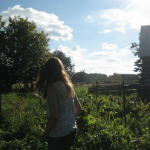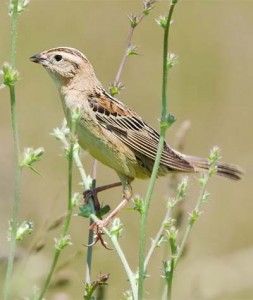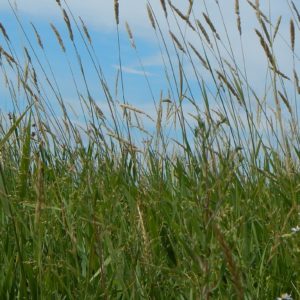Baie de L’Île-Verte & the Cacouna Marsh

Blair Scott,
Professional Writing Intern
This blog was written by Writing Intern Blair Scott.
In 1980, Environment Canada declared Quebec’s Baie de L’Île-Verte a National Wildlife Area (NWA). The designated area comprises roughly 322-406 hectares of marsh wetlands (les zones humides des marais) that serve as a critical habitat for many endangered species and unique, life-supporting flora.
While Environment Canada leads the management of this NWA, several other organizations have endowed the region with their own terms of ecological significance. In 1987, the Ramsar Convention designated Baie de L’Île-Verte a “Wetland of International Significance,” and in 1986, L’Île-Verte Migratory Bird Sanctuary (MBS) was officially recognized; consequently, the region has been listed as an Important Bird Area (IBA).
Baie de L’Île-Verte is located on “the south shore of the Upper Estuary of the St. Lawrence River 30km northeast of Rivière-du-Loup” (Environment Canada, 2015). It is home to southern Quebec’s largest sprawl of Spartina marshes, which provides crucial habitat for the American Black Duck. This critical link of dependence catalyzed the need for protective action and special wetland status.
The importance of this area is not exclusive to any one species, however; over 130 bird species take refuge in its hybrid terrestrial-aquatic habitat, with approximately 35,000 birds migrating through its territory every spring, and 10,000 passing through in the fall. Over thirteen species listed under Canada’s Species at Risk Act are found here, including Peregrine Falcon, Short-eared Owl and Bobolink.

Photo of a female Bobolink by Kelly Colgan Azar
The stringent protection and monitoring of Baie de L’Île-Verte has ensured that public access to this location will not compromise conservational priorities. But the hard work of environmental stewardship is seldom complete, and human development seems to encroach upon every ostensibly-pristine paradise.
Unlike its NWA-protected neighbour, Marais de Gros-Cacouna (Cacouna Marsh) has not been granted the conservation exemptions afforded by such status. This is unfortunate as this region of the St. Lawrence is invaluable to Canada’s threatened Beluga whale population – providing the only known breeding grounds for this beautiful marine mammal.
While hunting during the 19th and 20th centuries was the impetus driving the mass decline of this species, modern-day pollution – in the form of chemical pollution and oil spills, especially – poses a great threat if adequate protections are not put into place.
According to IBA statistics, the Cacouna Marsh is one of the three most vital shorebird sites on the south shore of the St. Lawrence River. It, too, has been designated as an Important Bird Area, but has yet to gain the conservation justice it deserves. Notable bird species observed here include the Black-bellied Plover, Nelson’s Sparrow, Wilson’s Phalarope and Marsh Wren. Key fish species include the American Eel, American Shad, Atlantic Herring, Atlantic Sturgeon, Capelin, Rainbow Smelt and Stickleback.
In light of these facts, Nature Canada is proposing a westward expansion of the current NWA safeguarding Baie de L’Île-Verte, so that it includes the Cacouna Marsh Important Bird Area site.
You can learn about more areas that are proposed to be protected here.
Wetland Facts:
What do wetlands have to do with water? These amazing ecosystems have adapted to low oxygen levels that would be unfit for a large number of species, and in spite of this, act as intermediary sinks that filter our water.
Wetlands are also factory powerhouses pumping out gazillions of insects! These, in turn, feed hundreds of thousands of animals who are all intricately connected in a complex web of trophic levels. In addition, wetlands are often connected to oceans, lakes and rivers, serving as canals for anadromous fish (i.e. fish who migrate between saltwater and freshwater locations: living most of their lives in saline waters, but preferring to spawn in freshwaters).
Wetlands come in many shapes and sizes: marshes, bogs, fens, swamps, wet meadows and vernal pools – to name a few! For more information on the ecological services that wetlands provide, or the St. Lawrence wetlands network, click here!



